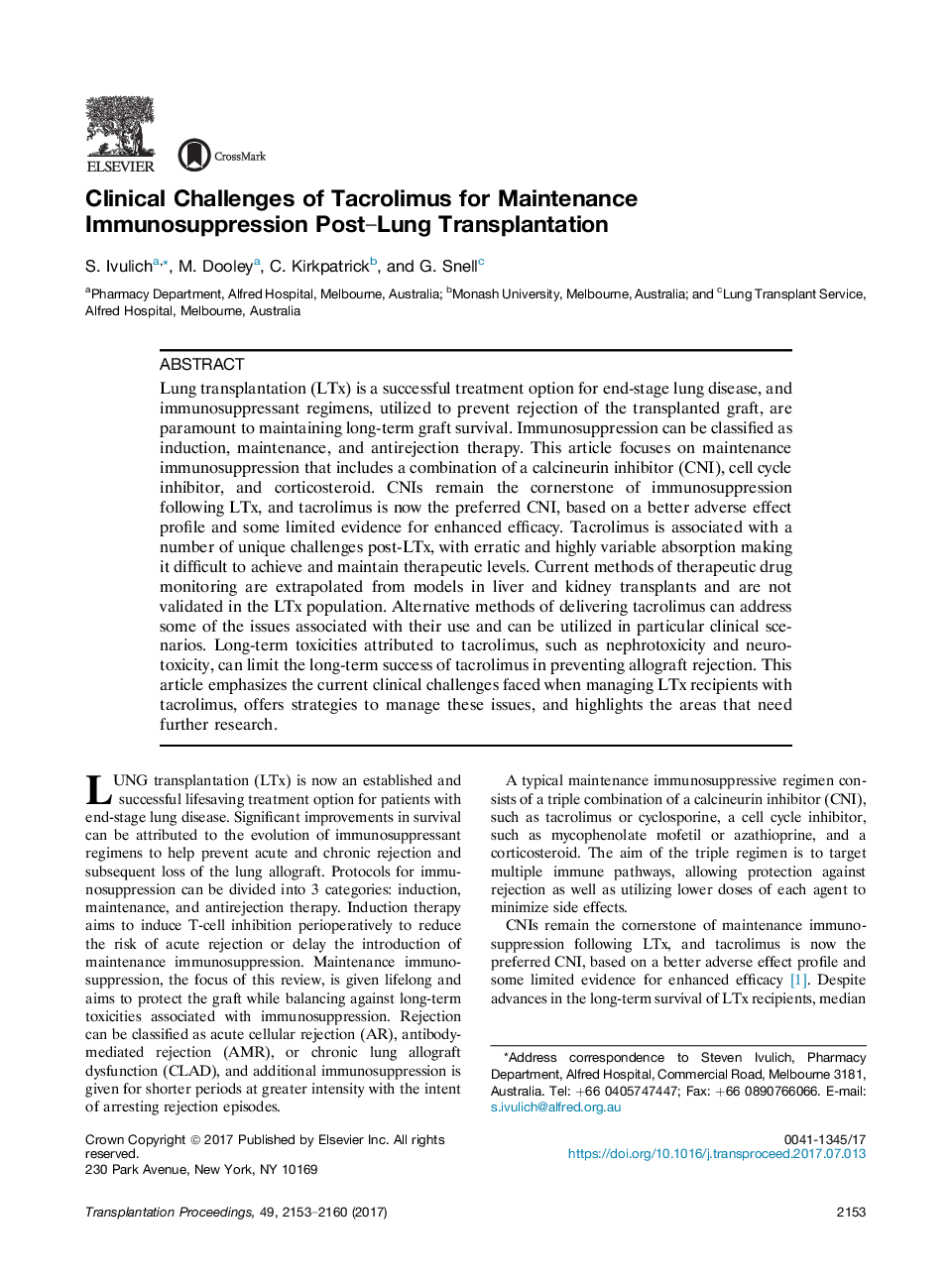| Article ID | Journal | Published Year | Pages | File Type |
|---|---|---|---|---|
| 8827559 | Transplantation Proceedings | 2017 | 8 Pages |
Abstract
Lung transplantation (LTx) is a successful treatment option for end-stage lung disease, and immunosuppressant regimens, utilized to prevent rejection of the transplanted graft, are paramount to maintaining long-term graft survival. Immunosuppression can be classified as induction, maintenance, and antirejection therapy. This article focuses on maintenance immunosuppression that includes a combination of a calcineurin inhibitor (CNI), cell cycle inhibitor, and corticosteroid. CNIs remain the cornerstone of immunosuppression following LTx, and tacrolimus is now the preferred CNI, based on a better adverse effect profile and some limited evidence for enhanced efficacy. Tacrolimus is associated with a number of unique challenges post-LTx, with erratic and highly variable absorption making it difficult to achieve and maintain therapeutic levels. Current methods of therapeutic drug monitoring are extrapolated from models in liver and kidney transplants and are not validated in the LTx population. Alternative methods of delivering tacrolimus can address some of the issues associated with their use and can be utilized in particular clinical scenarios. Long-term toxicities attributed to tacrolimus, such as nephrotoxicity and neurotoxicity, can limit the long-term success of tacrolimus in preventing allograft rejection. This article emphasizes the current clinical challenges faced when managing LTx recipients with tacrolimus, offers strategies to manage these issues, and highlights the areas that need further research.
Related Topics
Health Sciences
Medicine and Dentistry
Surgery
Authors
S. Ivulich, M. Dooley, C. Kirkpatrick, G. Snell,
